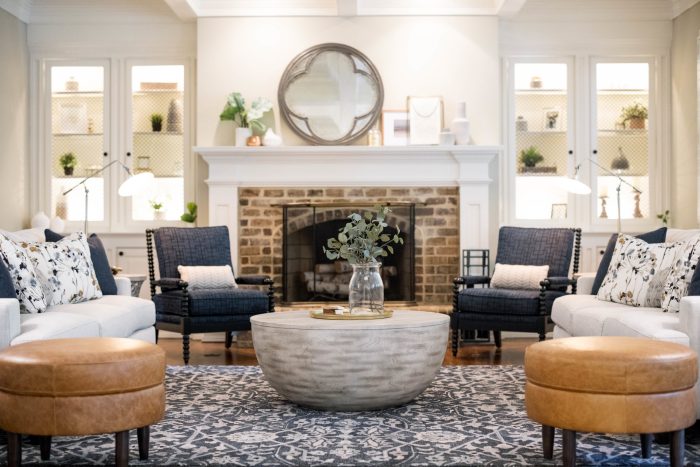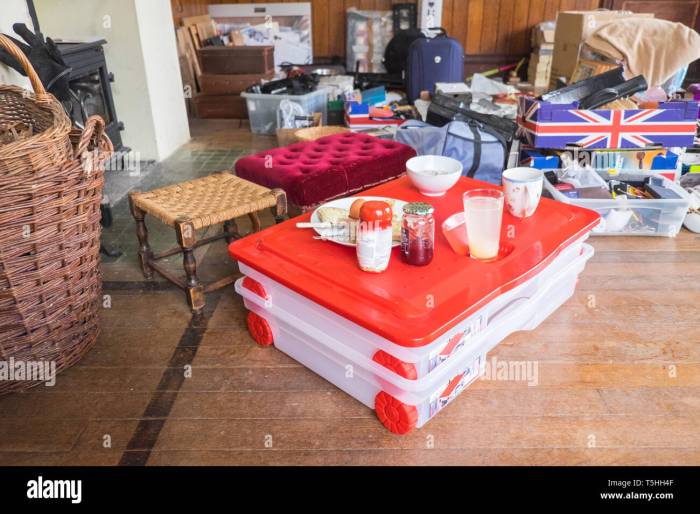Furniture Moved: A Comprehensive Guide to Space Planning, Safety, and Aesthetics sets the stage for this enthralling narrative, offering readers a glimpse into a story that is rich in detail and brimming with originality from the outset.
In this definitive guide, we delve into the intricate world of furniture movement, exploring its impact on space utilization, safety considerations, and aesthetic principles. From planning and execution to tools and techniques, we provide a comprehensive roadmap to help you navigate the complexities of furniture movement with ease and efficiency.
Impact of Furniture Movement on Space Utilization
The arrangement of furniture within a space can have a significant impact on its overall functionality and efficiency. By carefully considering the placement of furniture, it is possible to maximize available space, improve ergonomic comfort, and enhance productivity.
When you’re moving furniture, it’s important to take precautions to protect your belongings. One way to do this is to use provisions furniture . These are specialized materials that are designed to protect furniture from scratches, dents, and other damage.
Provisions furniture can be made from a variety of materials, including plastic, cardboard, and foam. They are available in a variety of sizes and shapes to fit any type of furniture. Using provisions furniture when moving can help to ensure that your belongings arrive at your new home in good condition.
Maximizing Space
Furniture arrangement can significantly affect the perceived and actual amount of space available in a room. By strategically placing furniture, it is possible to create the illusion of a larger space or to make a small space feel more spacious.
For example, placing furniture along the perimeter of a room can create a more open and airy feel, while clustering furniture in the center can make a room feel more cozy and intimate.
Ergonomic Considerations
In addition to maximizing space, furniture placement also has important ergonomic implications. Properly positioned furniture can help to reduce strain on the body and improve comfort. For example, chairs should be placed at a comfortable height and distance from desks, and computer monitors should be positioned at eye level to prevent neck and eye strain.
Productivity
The arrangement of furniture can also impact productivity. By placing furniture in a way that facilitates efficient movement and access to materials, it is possible to improve workflow and increase productivity. For example, placing frequently used items within easy reach can save time and effort, while creating a dedicated workspace can help to minimize distractions and improve focus.
Methods for Moving Furniture Safely and Effectively

Moving furniture can be a daunting task, but with the right techniques and precautions, it can be done safely and effectively. This guide will provide you with the best practices for moving furniture without causing damage to the furniture or your surroundings.
We will cover the proper techniques for lifting, carrying, and placing furniture, as well as the use of protective materials and equipment to ensure a safe and successful move.
Lifting Furniture
Before attempting to lift furniture, it is important to assess its weight and size. If the furniture is too heavy or bulky for you to lift alone, enlist the help of a friend or family member. Always lift with your legs, not your back, and keep your back straight.
Bend your knees and squat down to lift the furniture, keeping it close to your body. Avoid twisting or jerking the furniture, as this can cause injury.
If you’ve recently moved and are in need of stylish and comfortable furniture, look no further than Havertys Furniture Raleigh . With a wide selection of sofas, chairs, tables, and more, Havertys has everything you need to furnish your home.
And with their convenient Raleigh location, you can easily browse their inventory and find the perfect pieces for your space. Whether you’re looking for traditional or contemporary furniture, Havertys has something for everyone. So come visit Havertys Furniture Raleigh today and find the perfect furniture for your new home.
Carrying Furniture
When carrying furniture, be sure to distribute the weight evenly between your hands. Hold the furniture firmly and keep your back straight. If the furniture is large or awkward, use a furniture dolly or hand truck to transport it. When carrying furniture up or down stairs, always face the stairs and take one step at a time.
Never attempt to carry furniture up or down stairs if you are not confident in your ability to do so safely.
Placing Furniture
When placing furniture, be sure to choose a location where it will not obstruct traffic or create a hazard. Always place furniture on a level surface and avoid placing it in direct sunlight, as this can damage the furniture over time.
Moving furniture can be a daunting task, especially if you have large or heavy items. If you’re hiring professional movers, you may wonder do you tip furniture delivery people ? While tipping is not required, it’s a common practice to show your appreciation for their hard work.
The amount you tip will vary depending on the size of your move and the level of service you receive.
If you are placing furniture on a carpet, be sure to use furniture pads to protect the carpet from scratches and dents.
Protective Materials and Equipment
To protect your furniture and your surroundings during a move, it is important to use protective materials and equipment. These materials can include furniture pads, blankets, and plastic wrap. You may also want to use a furniture dolly or hand truck to transport heavy or bulky furniture.
By using the proper protective materials and equipment, you can help to ensure that your furniture arrives at its new home safely and undamaged.
Considerations for Planning Furniture Movement
Thorough planning is essential for successful furniture movement. It helps minimize disruption, damage, and wasted effort.
When planning a furniture move, consider the following factors:
Room Layout
- Sketch the existing and desired room layouts to visualize the movement.
- Determine the optimal placement of furniture based on traffic flow, natural light, and aesthetics.
Furniture Size and Weight
- Measure and weigh the furniture to assess its handling requirements.
- Consider the size and weight of doors, hallways, and stairwells.
Potential Obstacles
- Identify any obstacles, such as narrow doorways, low ceilings, or tight corners.
- Plan for alternative routes or disassembly of furniture if necessary.
Additional Considerations
- Protect floors and walls with moving blankets or cardboard.
- Use furniture moving apps or hire professional movers for assistance with planning and execution.
Techniques for Arranging Furniture Aesthetically

Interior design and furniture arrangement principles can create visually appealing spaces. Consider furniture styles, colors, and textures that complement each other and the room’s overall aesthetic. Focal points, balance, and symmetry contribute to a harmonious arrangement.
Choosing Furniture Styles, Colors, and Textures
Cohesive furniture arrangements begin with selecting pieces that harmonize stylistically. Traditional styles feature ornate details, while modern designs emphasize clean lines. Colors should complement the room’s existing palette, creating a unified look. Textures add depth and interest, but avoid overwhelming the space with too many different ones.
Creating Focal Points
Focal points draw the eye and anchor the arrangement. They can be statement pieces like a fireplace, a large artwork, or a striking sofa. Arrange furniture around the focal point, ensuring it remains the center of attention.
Achieving Balance and Symmetry
Balance distributes visual weight evenly throughout the room. Symmetrical arrangements mirror elements on either side of a central axis, creating a formal and orderly look. Asymmetrical arrangements allow for more flexibility and can add a touch of dynamism.
Tools and Equipment for Furniture Movement

Moving furniture safely and efficiently requires the right tools and equipment. These tools can help protect your furniture from damage, make the moving process easier, and prevent injuries.
When selecting tools for furniture moving, consider the size, weight, and type of furniture you’re moving. Some essential tools and equipment include:
Furniture Dollies
- Furniture dollies are platforms with wheels that allow you to move heavy furniture easily. They are available in different sizes and weight capacities, so choose one that is appropriate for the furniture you’re moving.
- Furniture dollies are especially useful for moving large and heavy furniture, such as sofas, chairs, and beds.
Lifting Straps
- Lifting straps are heavy-duty straps that help you lift and move furniture without straining your back or arms.
- They are adjustable and can be used by one or two people, making them a versatile tool for furniture moving.
Protective Blankets, Furniture moved
- Protective blankets are thick blankets that can be used to wrap furniture to protect it from scratches, dents, and other damage during moving.
- They are especially useful for moving delicate or valuable furniture.
Other Tools
- Other tools that may be useful for furniture moving include furniture sliders, pry bars, and screwdrivers.
- Furniture sliders can help you move furniture on carpet or other smooth surfaces without damaging the floor.
- Pry bars can be used to pry furniture apart or to move it over obstacles.
- Screwdrivers can be used to disassemble furniture for easier moving.
Closing Summary: Furniture Moved
As we conclude our exploration of furniture moved, we hope that this guide has provided you with the knowledge and confidence to tackle your next furniture rearrangement project with ease and creativity. Remember, furniture movement is not merely about shifting objects; it’s an opportunity to transform your living spaces into expressions of your personal style and enhance your overall well-being.
Question Bank
What are some common mistakes to avoid when moving furniture?
Overloading furniture, improper lifting techniques, neglecting protective measures, and failing to plan the move in advance are common pitfalls to avoid.
What are the benefits of using professional movers for furniture movement?
Professional movers provide expertise, efficiency, safety, and peace of mind, ensuring a seamless and stress-free moving experience.
How can I create a visually appealing furniture arrangement?
Consider principles of interior design such as balance, symmetry, focal points, and complementary colors and textures to achieve a harmonious and aesthetically pleasing space.




Leave a Comment